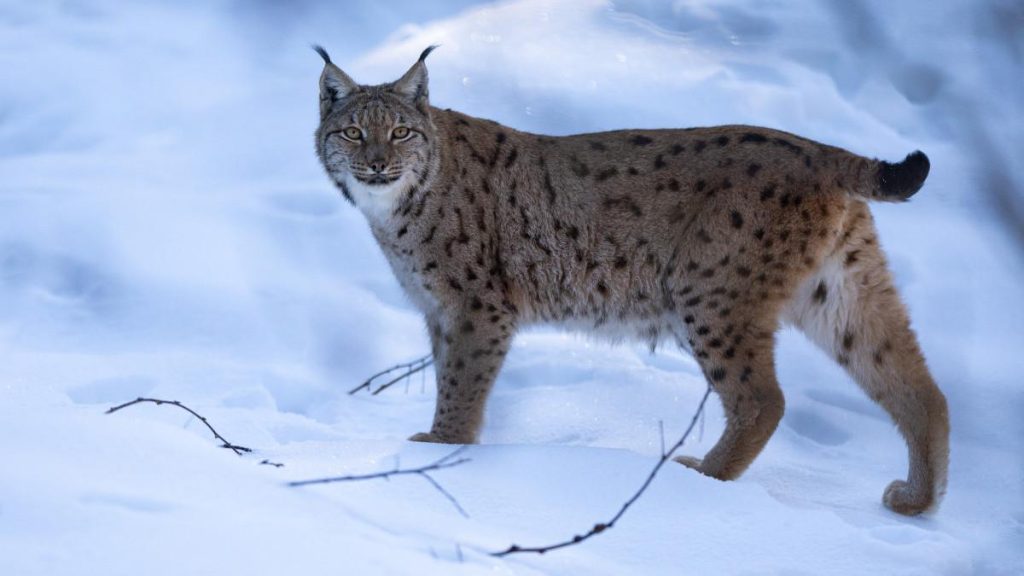The term “Arctic Cat” instantly sparks curiosity and wonder. Is there really a cat breed that thrives in the harsh, icy wilderness of the Arctic? The truth is, no official feline breed carries the name Arctic Cat. Yet, the concept has fascinated pet enthusiasts and nature lovers alike, often blending myth with reality. This mysterious idea likely stems from the existence of extraordinary cold-climate cat breeds that showcase incredible survival traits.
Breeds like the Norwegian Forest Cat, Siberian Cat, and Maine Coon stand out as nature’s answer to frigid environments. These cats possess thick, water-resistant coats, muscular builds, and insulating layers that allow them to endure extreme temperatures with grace. Their majestic appearance and rugged elegance have made them favorites among cat lovers who admire strength, beauty, and resilience in a single package.
In this article, we’ll dive deep into the origins of the Arctic Cat myth, explore why it captivates so many pet enthusiasts, and reveal the real-life cat breeds that embody Arctic-like qualities.
The term “Arctic Cat” often sparks curiosity and imagination. It evokes the image of a feline with a luxurious, insulating coat, snow-resistant paws, and a nature as wild as the tundra. However, in the realm of officially recognized domestic cat breeds, no breed goes by the name Arctic Cat.
So where does this term come from? The confusion may stem from several factors:
- Misinterpretations and Folklore – Over time, stories and myths have circulated about cold-weather cats capable of surviving in freezing conditions. Some real breeds thriving in cold climates may have inspired this idea.
-
Marketers and brand developers widely associate the name Arctic Cat with a popular snowmobile and all-terrain vehicle brand, which likely contributed to the misconception that a feline counterpart exists.
-
Cold-Resistant Breeds – While no official “Arctic Cat” exists, certain breeds have evolved impressive adaptations to withstand cold weather, making them the closest thing to a true Arctic feline.
Breeds That Thrive in Cold Climates
Although the Arctic Cat isn’t an actual breed, nature has gifted us with several remarkable cold-weather cat breeds that have evolved to endure freezing temperatures. These felines boast thick coats, water-resistant fur, and other physical traits that enable them to survive in chilly conditions.
1. Norwegian Forest Cat – The Viking’s Feline Companion
Origin: Norway
Adaptations: Dense, water-repellent double coat, tufted ears, and bushy tail
The Norwegian Forest Cat, often referred to as “Wegie”, is believed to have traveled with the Vikings on their long sea voyages. Originating in the harsh Scandinavian climate, this breed has developed a thick, water-resistant double coat that protects it from cold and damp conditions. Their large, tufted paws act like natural snowshoes, preventing them from sinking into the snow. These cats are known for their independent yet affectionate nature, making them both rugged survivors and loving companions.
2. Siberian Cat – Russia’s Resilient Snow Cat
Origin: Russia
Adaptations: Triple-layered coat, muscular build, and cold-resistant paws
Hailing from the icy forests of Siberia, the Siberian Cat is a true cold-weather champion. Their thick, triple-layered fur provides insulation against freezing temperatures, while their large, sturdy frame helps them navigate snowy landscapes with ease. Siberians are also known for their playful and affectionate temperament, making them ideal pets for those who admire both beauty and resilience in a cat.
3. Maine Coon – America’s Hardy Winter Warrior
Origin: Northeastern United States
Adaptations: Long, shaggy coat, tufted ears, and large, snow-resistant paws
The Maine Coon is one of the largest and most rugged domestic cat breeds. Originally from the snowy regions of Maine, USA, these cats developed a thick, luxurious coat that repels water and provides warmth in winter. Their tufted ears and bushy tail further enhance their ability to withstand harsh weather, while their large, furry paws help them move effortlessly over snow. Despite their wild appearance, Maine Coons are gentle giants, known for their affectionate and sociable nature.
The Myth vs. Reality of the Arctic Cat
The idea of an “Arctic Cat” is undoubtedly fascinating, but it remains more of a mythical concept than an actual recognized breed. No official feline breed has specifically adapted to Arctic conditions, but the Norwegian Forest Cat, Siberian Cat, and Maine Coon showcase extraordinary cold-weather adaptations, making them the closest living counterparts to the imaginary Arctic Cat. So, the next time someone mentions an Arctic Cat, you can confidently explain the truth while no such breed exists, nature has already provided us with some of the most beautifully adapted felines that thrive in cold climates. Whether you’re looking for a fluffy snow companion or simply appreciate the resilience of nature’s creatures, these breeds are a testament to the feline world’s incredible ability to adapt and survive.
Final Thoughts
The Arctic Cat may not exist as an official feline breed. Its concept captures the imagination of cat lovers worldwide. While no true “Arctic Cat” prowls the frozen tundra, remarkable breeds like the Norwegian Forest Cat, Siberian Cat, and Maine Coon come close with their thick coats, powerful builds, and natural resilience to cold climates. These majestic cats remind us that nature has already perfected the art of survival in extreme weather.
Frequently Asked Questions (FAQs)
Q1. What is an Arctic Cat?
The term “Arctic Cat” usually refers to a snowmobile brand, but it can also describe cats with features suited for cold climates, such as thick fur and strong builds.
Q2. Are there real Arctic cats living in the wild?
Yes. Certain wild cats, like the Canadian Lynx and Siberian cats, are adapted to Arctic or sub-Arctic regions with thick fur and large paws for walking on snow.
Q3. What makes an Arctic cat unique?
Arctic cats are known for their dense double coats, strong hunting instincts, and resilience in freezing temperatures.
Q4. Can Arctic cats be kept as pets?
Yes, domestic breeds like the Siberian or Norwegian Forest Cat are considered “Arctic cats” and make great pets due to their friendly and hardy nature.
Q5. Do Arctic cats need special care in warmer climates?
Yes. They require a cool environment, regular grooming, and hydration to prevent overheating because of their thick coats.


